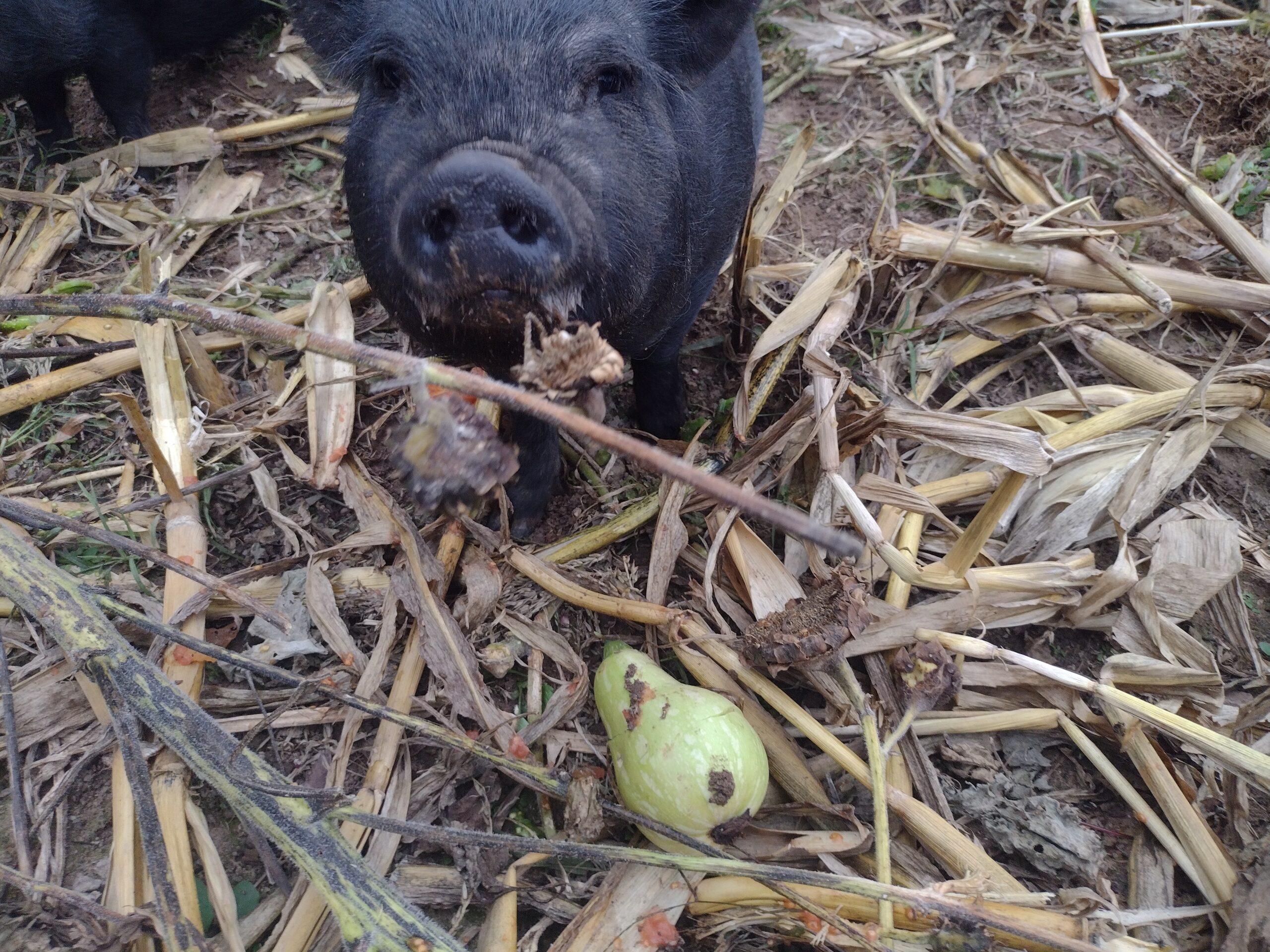Rabbits are the cheapest animals to raise for meat using standard methods, after the initial purchase price. Chickens and pigs are the cheapest animals to raise for meat if you are buying all the feed and don’t want to breed animals. If you have good pasture, grazing animals become much cheaper.
Here is a chart of the actual costs to raise each animal, *using standard practices, based on my local animal and feed prices. But remember, it can all be done cheaper.
| Cost to buy | Feed amount | feed cost | yield | cost per pound | |
| Rabbits | $20 each (one time) | 100 lbs. per litter of 8 | $30 per 8 | 20 lbs. per 8 | $1.50/lb. in feed only |
| Pigs | $100 | 700 lbs. | $200 each | 120 lbs. | $2.50/lb feed and purchase price |
| Meat chickens | $2 each | 15 lbs. | $5.55 each | 4.5 pounds | $1.67/lb feed and purchase price |
| Egg chickens* | $2.50 each | 80 lbs./year | $26 each | 6 dozen 1st yr/ 10 dozen after | $4.75/dozen 1st year $2.60 next year |
| Goats | $200 each | 200 lbs hay after weaning | $30 each | 25 lbs. | $1.20/lb. in feed only |
| Sheep | $200 | 450 lbs hay after weaning | $67.50 each | 50 lbs. | $1.35/lb. in feed only |
| Cattle | $800 | 3,600 lbs grain-based feed | $1,200 | 750 lbs. | $2.66/lb. in feed and purchase |
There are two ways to raise livestock. You can buy young animals every spring, or you can get breeders and produce your own. Most people who raise pigs and cows buy calves or piglets from a breeder. Now, that adds considerably to the final cost, but you don’t need to take care of other animals.
There is extra infrastructure, extra care, and extra feed required to have a breeding program. Plus, you have to deal with a mature, large animal. It’s often only worth it to breed your own if you’re doing several and then you have to start selling livestock.
Smaller animals are usually purchased then kept and bred, so the purchase price is more of a one-time thing. Cornish cross chickens are the exception. Although it’s not hard to produce your own cross, no one really does it and the cost adds about $2 to each bird, or around 40 cents a pound.
The only animals that are feasible for the buy-raise-butcher method are cows, pigs, and chickens. All other animals are only going to be profitable if you maintain your own breeding herd. Here’s a chart of normal breeding performance of livestock. This is something to really consider.
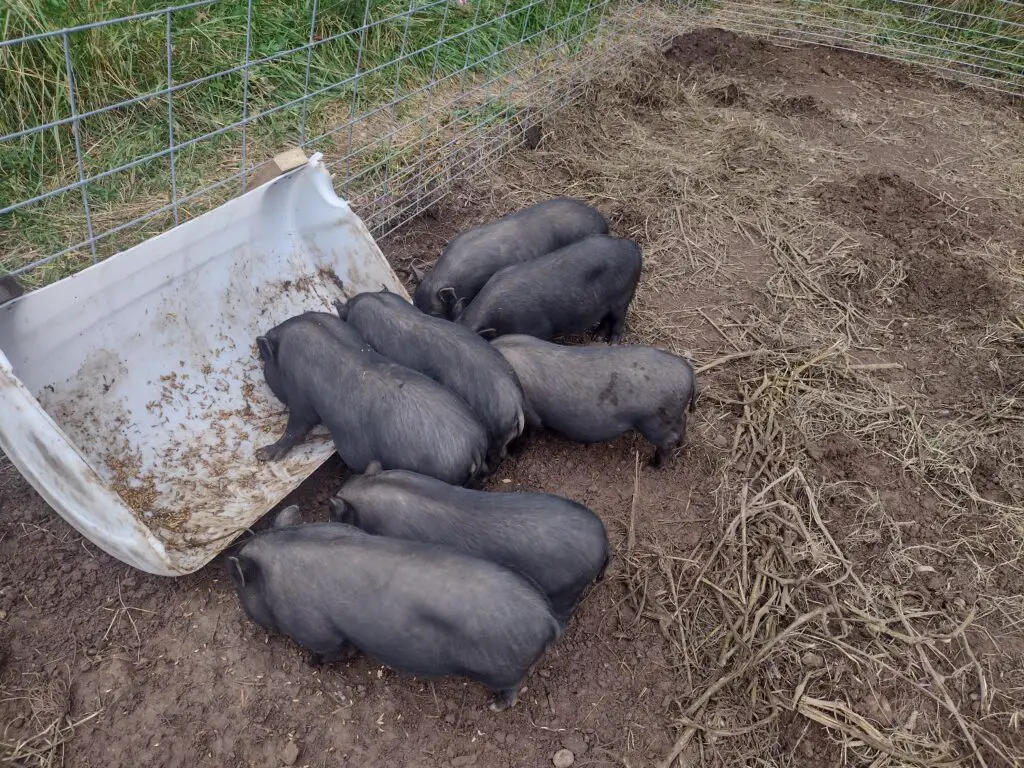
By breeding our own and using alternative feed options, pigs have become our cheapest meat animal. I just butchered this litter and ended up at a bit under $1/pound. It’s pretty impressive really.
Chart of animal breeding capabilities and litter sizes
| Average litter size | Litters/year | Young/year | butcher age | |
| Rabbits | 8 | 4 | 32 | 8-10 weeks |
| Pigs | 9 | 2 | 18 | 6 months |
| Egg chickens | 12 | 1 | 12 | 8-16 weeks |
| Goats | 1-2 | 2 | 2-4 | 6 months |
| Sheep | 2 | 2 | 4 | 6 months |
| Cattle | 1 | 1 | 1 | 1.5 years |
Rabbits and pigs are very productive animals. Their productivity is why they are such an economical choice for the small farmer or homesteader. That’s why we decided to go with rabbits and pigs. And, I raise them a lot cheaper than most.
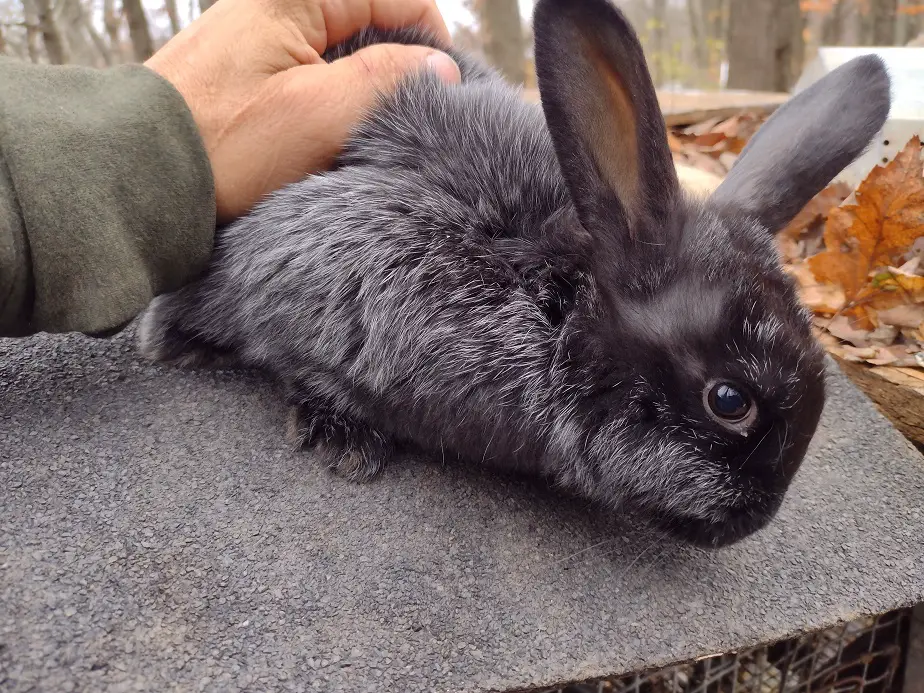
Raising Rabbits Cheap
The best way to lower the cost of rabbits is by buying used cages, growing your own feed, and maintaining a low mortality rate. Large litter sizes and keeping them all alive are key to a frugal operation. By feeding quality pasture-type crops, the feed bill can be lowered or eliminated.
Buying bags of pelleted feed is usually the most expensive way to feed your animals. This summer we fed our rabbits on pasture crops, some wild and some that we planted. I’d say it went fairly well. They were healthy, more vigorous, and had a significantly lower bunny mortality rate.
It took a bit more time to go out and cut fresh greens daily, but it was worth it to eliminate the feed bill. Overall, rabbits are easy to raise cheap. They are very content with simple feed and basic cages as long as they are out of direct sunlight, wind, and rain.
The important part of raising rabbits is to give them a good place to raise their young. Rabbits need clean, dry nesting boxes for their bunnies. The nesting boxes must have solid walls (think wood) if housed outdoors. In warm weather, wood shavings are an acceptable nesting material.
In cold weather, clean straw is The best option. and really pack it in there. The absolute most important part is to keep bunnies dry. Be sure there are no water drips coming into the nest. In cold weather, keep an eye on the bunnies the first two weeks. If one falls out of the nest, it can very quickly get cold and die.
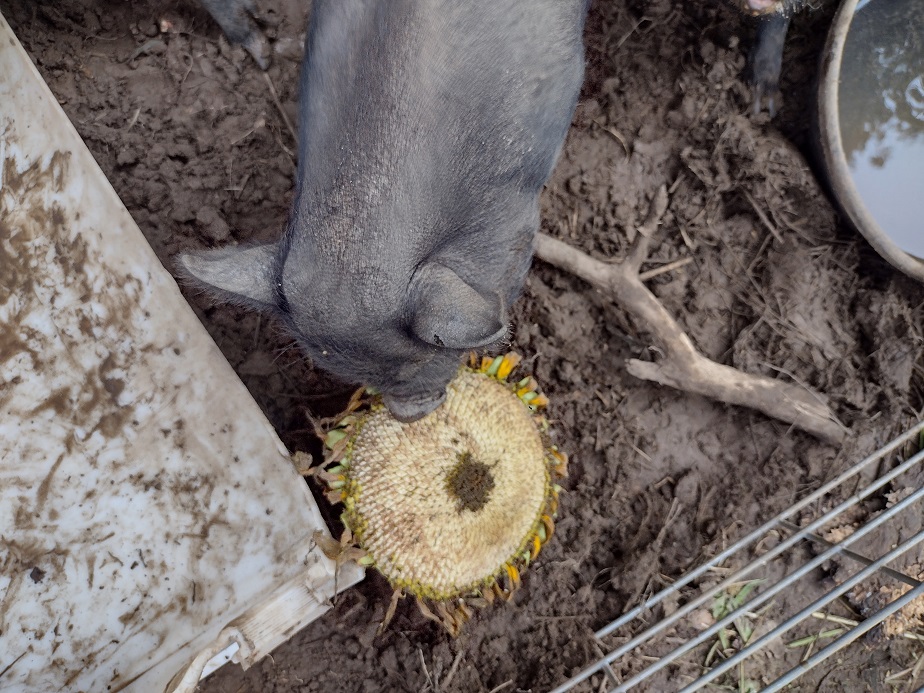
Raising Pigs Cheap
Sourcing food-waste, buying from bulk feed stores, and fermenting cheap grains are great ways to lower pig feed costs. Butcher pigs by 6 months old, while they are still efficient with feed. Keep animals happy, healthy, and stress free so they will grow well on their feed.
We feed our pigs all kitchen scraps. It doesn’t do a lot now that we have 9 pigs out there, but it certainly helped when we had only one pig. Our pigs’ main diet is currently fermented grains. I bought whole corn and whole oat in bulk from a nearby farm. It’s being stored in 55-gallon barrels.
We fill a bucket halfway with a mix of grains, top it off with water, and let it sit 3-4 days at room temperature. Grains themselves are low in vitamins and protein, but when properly fermented (not actually alcoholic) they have more protein and vitamins. According to my pigs outside, it works well.
Protein is the biggest limiting factor os a pig’s growth. Growing protein-rich crops like sunflowers can help to improve growth. We grow sunflowers every year for the animals and it does help. The common protein supplement is soybean meal or roasted soybean.
I fed our pigs some roasted soybean until 4 months old for extra protein in the younger stage. They don’t need as much after that. The other thing we did was feed our pigs a lot of grass, garden weeds, and farmer’s market leftovers.
Feeding some fresh vegetation daily gave out pigs a good vitamin supplement. Even just grass is full of vitamins and very beneficial for pigs. Green tree leaves are also good for pigs and most of the time, they’ll eat them.
Here’s a link to my full article on raising pigs cheap
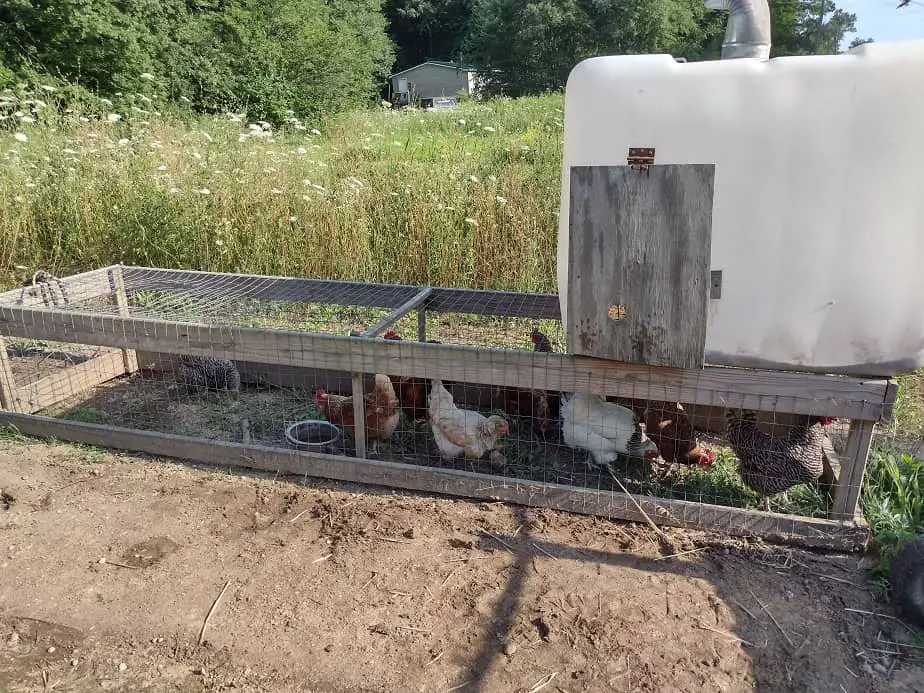
Raising Chickens Cheap
Raise chickens cheaply by buying feed in bulk from a grain elevator or feed store. Laying hens can be raised and housed cheaply, but it’s hard to raise meat chickens very cheap. Meat chickens need a lot of high-protein feed to keep up growth. Laying hens need very little feed if free ranged.
The big cost with chickens is feed and housing. Buying 40 or 50-pound bags of feed from Farm and Fleet or Tractor Supply isn’t very economical, but can be alright if you only have a small number of animals. You should be looking for something in the area of 30 to 35 cents a pound if you have a lot of birds.
One of the problems with cheaper chicken fed is that it’s usually lower in protein and/or calcium. Meat birds absolutely need the high protein to grow properly, and laying hens need a lot of calcium to stay healthy and produce eggs with strong shells.
You can get away with significantly less calcium in the feed if you save your eggshells. Ground eggshells can make up about 40 percent of the calcium that chickens need. This only works if you aren’t selling many of the eggs. If free-ranging chickens on very little feed, you need to be doing this.
Here’s a video of me explaining it more
As far as saving on meat birds, it’s tough. You should definitely shop around and compare local feed prices, even from other locations of the same store. Ask others where they get their feed from and what they pay. Don’t forget to shop around for the birds too.
I get really good prices from Hoover’s Hatchery. They ship almost any time of the year too. But, sometimes, I can order them cheaper from Tractor Supply Co, even though they come from the same hatchery. In-store birds tend to go on a clearance sale to quickly sell the last of the stock.
If your local farm stores have chicks in, it’s usually worth stopping by to see if any are on clearance. Sometimes you can snag a really good deal. My neighbor bought twenty chicks for 25-cents each this fall because they were getting too big for the brooder at the store.
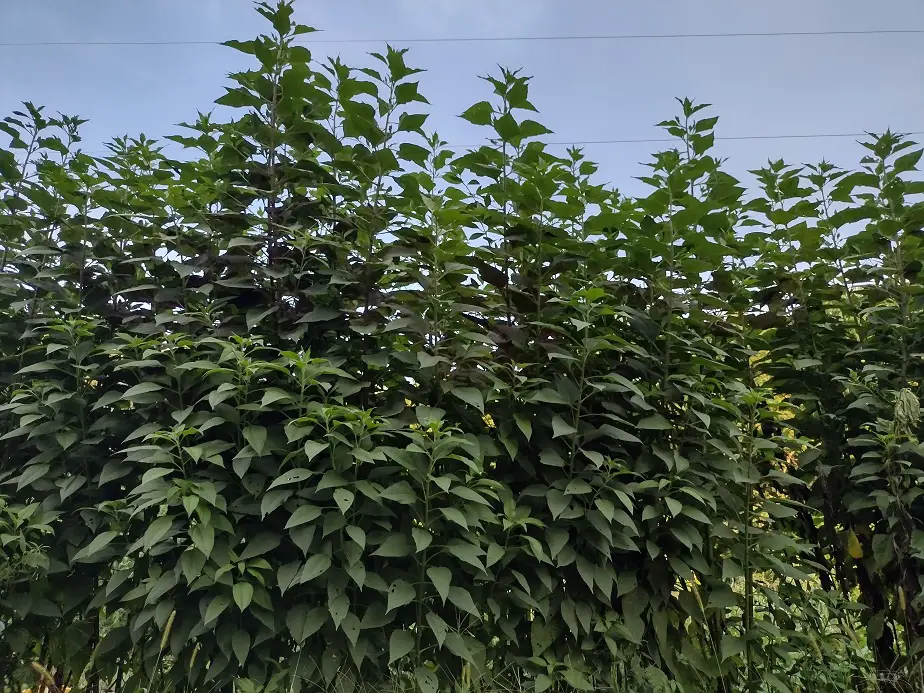
Rasing Grazing Animals Cheap
The simplest way to save money raising grazing animals is to utilize your own pasture and avoid useless high-energy feeds. Goats, sheep, rabbits, and cows will al do very well on pasture crops alone, as long as it’s decent pasture. Perhaps the biggest part of keeping grazing animals should be pasture management.
Wild grasses are a fine pasture crop. Higher protein perennials like alfalfa, chickory, and comfrey are great ways to boost the diet when additional nutrition is needed. You can plant and grow a pasture crop, or more of a field fodder crop for your animals. One of my favorites are fodder beets.
Fodder beets include mangel beets and sugar beets. They have starchy roots and high-protein leafy tops. Mangel beets grow more pounds per acre and are great all-grazing animals. I have grown them for my rabbits. Sugar beets are slightly less productive, but higher in energy and benefit milking animals.
I have grown mangel beets for my rabbits, and they grew very well on them. This year, I bought some sugar beets to help feed my pigs. While they didn’t care for mangels, they liked the somewhat sweeter sugar beets. No, it’s not a complete diet for pigs, but it helped.
We’re increasing our rabbit herd this coming spring. In order to feed them economically, I’m clearing and planting 1/4 acre of various perennial and fodder annual crops. They will include: alfalfa, buckwheat, sorghum, sunflower, sunroot (jerusalem artichike), sugar beet, flint corn, and comfrey. I’ll also have some wild grasses and chickory to pick for them.
Right now, the pigs have been our cheapest animal to raise for meat, but after establishing the new feed plot, the rabbits will be the cheapest because we won’t ever have to buy feed, as long as I can also put up enough feed for winter. I think I can do that. Gotta get that root cellar going to store the sugar beets.
Related Articles:

